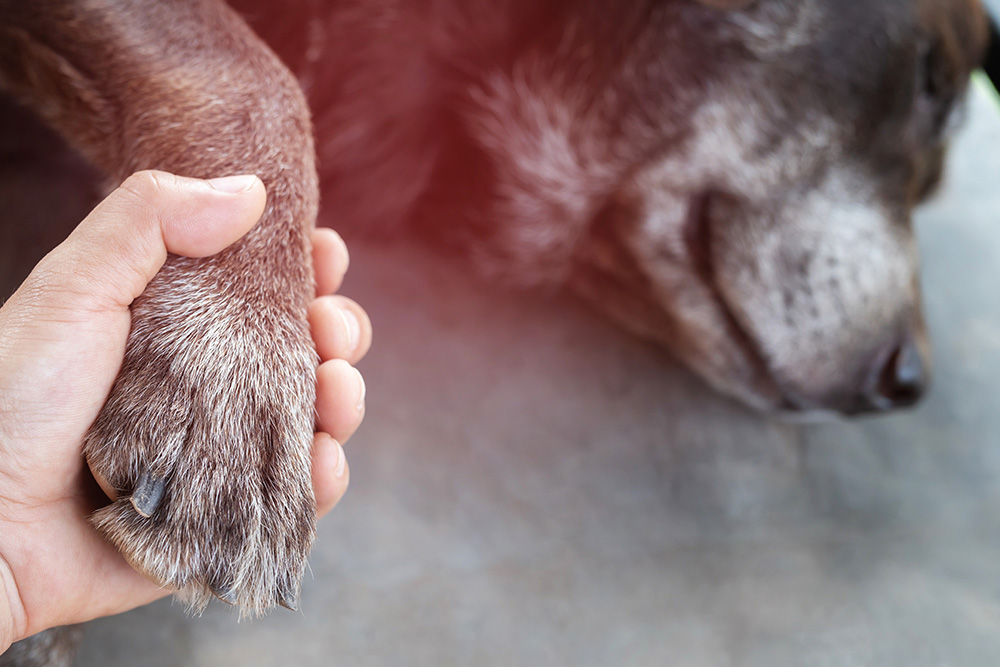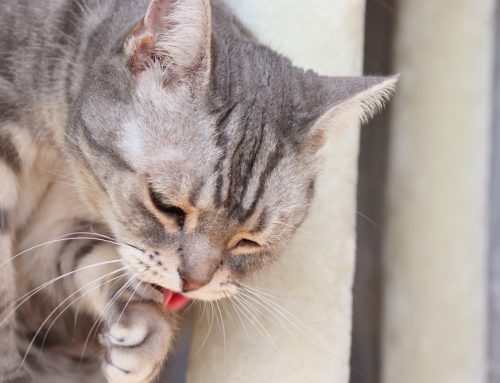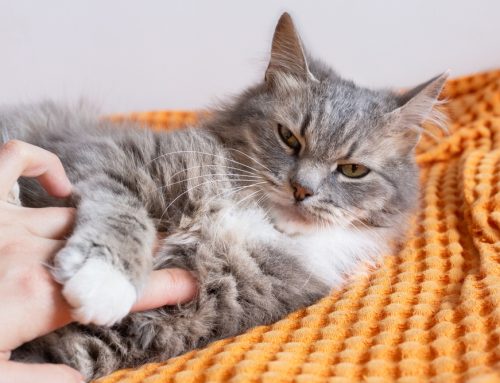Foreign Object Ingestion in Pets: From Curiosity to Critical Care
It always seems to happen in seconds. One moment your dog’s chewing on a toy, and the next, it’s vanished. Or your cat’s batting at a piece of ribbon that suddenly disappears. Should you worry? Unfortunately, even small objects can cause big problems.
At Tidmore Veterinary Hospital in Northport, we understand how fast these accidents can happen- and how quickly they can turn serious. Our team has treated everything from socks and squeaky toys to coins, hair ties, and even mulch. Whether it’s a small mishap or a true emergency, knowing the signs of a blockage can make all the difference.
When to Suspect a Problem
Foreign body ingestion doesn’t always look like an emergency at first. The earliest signs can be subtle, but they tend to worsen quickly.
Common early indicators include:
- Repeated vomiting or gagging
- Skipping meals or showing no interest in food
- Straining or producing little stool
- Lethargy, restlessness, or unusual posture
- Abdominal pain or bloating
If these symptoms appear, don’t wait to see if they’ll “work themselves out.” Some obstructions pass on their own, but many require medical intervention to prevent life-threatening complications.
Understanding Different Types of Blockages
Not all swallowed objects behave the same way.
- Linear obstructions, often caused by string, yarn, or tinsel, can cinch and tear the intestines- especially in cats and small dogs.
- Complete obstructions stop the passage of food and water entirely, causing dehydration and rapid decline.
- Partial obstructions may allow intermittent movement of material, leading to cycles of vomiting and temporary improvement.
Why Immediate Care Matters
A swallowed object can shift from “maybe nothing” to “medical crisis” in a matter of hours. Obstructions cut off circulation to the intestinal wall, allowing toxins and bacteria to leak into the body. Without treatment, severe infection and sepsis can follow.
Delaying care also increases the need for surgery, lengthens recovery, and raises complication risk. Everyday hazardous household items for pets– like corn cobs, magnets, pennies, and skewers- may look harmless but can cause severe internal damage.
As an AAHA-accredited hospital, our emergency approach prioritizes patient comfort, safety, and swift diagnosis. If you notice any concerning signs, call us right away at (205) 339-5555.
How We Diagnose an Obstruction
Our veterinarians begin by stabilizing your pet’s hydration and comfort, then use diagnostic tools to identify what- and where- the problem is.
At Tidmore Veterinary Hospital, our state-of-the-art imaging and lab equipment help us detect blockages in dogs, cats, and even reptiles with precision and minimal stress.
Typical diagnostic steps may include:
- Physical exam to check for pain, bloating, or foreign material (like string under the tongue).
- X-rays to reveal gas buildup or visible objects.
- Ultrasound to evaluate intestinal movement and tissue health.
- Lab testing to assess electrolyte balance, organ function, and infection risk.
These tools allow us to act quickly- sometimes catching issues early enough to avoid surgery altogether.
Treatment Options: From Noninvasive to Surgical
When Monitoring Is Appropriate
If the object is small and recently swallowed, inducing vomiting under supervision may allow safe removal. In other cases, intravenous fluids and careful observation can help the object pass naturally. Our goal is always the least invasive approach that ensures your pet’s safety.
Endoscopic Procedures
For objects in the upper digestive tract, veterinary endoscopy provides a minimally invasive solution. Using a small camera and grasping tools, veterinarians can visualize and remove items through the mouth, avoiding abdominal surgery entirely.
- Gastrotomy: opening the stomach to retrieve an object that has not passed into the intestines. This is common with items like rocks, toys, or bones that remain in the stomach. The stomach is then flushed, closed in layers, and carefully inspected for any additional debris.
- Enterotomy: creating a controlled incision in the small intestine to remove the obstruction. This technique is used when the object has progressed further along the digestive tract but has not caused significant tissue death or rupture.
- Resection and anastomosis: when the intestine is severely damaged, the affected segment is removed and the healthy ends are sutured back together. This procedure requires technical precision to ensure proper healing and to prevent leakage or narrowing at the connection site.
Our AAHA-accredited hospital uses modern anesthesia and surgical monitoring protocols that meet the highest standards of safety. From preoperative stabilization to postoperative care, every member of our team works together to minimize risk, shorten recovery time, and help your pet return to comfort as quickly as possible.
Surgery is only the first step toward recovery. Pets recovering from obstruction surgery require continuous monitoring for hydration, infection, and appetite. Supportive therapy includes IV fluids, anti-nausea medication, pain control, and nutritional support to restore digestive health. Our hospital team follows up closely after discharge, guiding owners through every stage of at-home recovery.
Potential Complications and What to Watch For

Even after successful treatment, pets must be observed carefully for signs of postoperative complications such as:
- Leakage or swelling at the incision site
- Ongoing vomiting or refusal to eat
- Fever, lethargy, or visible discomfort
- Irregular bowel movements or bloating
If you notice any of these signs, contact our team immediately. Our doctors remain available to help troubleshoot concerns, adjust medication, and ensure a smooth recovery.
Caring for Your Pet at Home
Once your pet returns home, calm and consistency are essential.
At-home recovery recommendations:
- Restrict activity- leash walks only for dogs, and quiet rooms for cats or reptiles.
- Use an Elizabethan collar to prevent licking or chewing at the incision.
- Offer small, soft meals until your veterinarian clears a normal diet.
- Check the incision twice daily for redness, swelling, or discharge.
To keep pets mentally engaged during downtime, try gentle dog enrichment activities or cat enrichment toys. These dog crate rest tips can also make recovery less stressful.
Preventing Future Ingestions
Prevention starts with knowing your pet’s habits and modifying their environment.
Tips to help keep pets safe:
- Store laundry, food skewers, and trash securely
- Choose durable toys designed for your pet’s size and species
- Keep children’s play items off the floor
- Avoid strings, ribbons, and hair ties as playthings
Training “leave it” and “drop it” commands can prevent accidents, and for chronic scavengers, basket muzzle training offers safe outdoor control.
Being prepared financially also helps during emergencies. Review this pet insurance guide and explore Tidmore’s payment options to make urgent decisions easier when every moment counts.
Your Northport Partner in Pet Wellness and Safety
Foreign body ingestion can be frightening, but timely care and expert treatment give pets the best chance at recovery. At Tidmore Veterinary Hospital, we combine advanced technology with compassionate, individualized attention for every patient- from dogs and cats to reptiles and other small companions.
As an AAHA-accredited facility, we uphold the highest standards of safety and care. Our dedicated team of doctors provides clear communication, gentle handling, and expert follow-up every step of the way.
If you suspect your pet has swallowed something unusual, contact us at (205) 339-5555. Because when it comes to your pet’s health, swift action and trusted care can truly be life-saving.








Leave A Comment